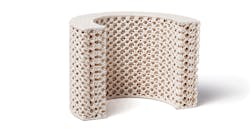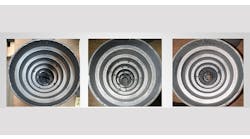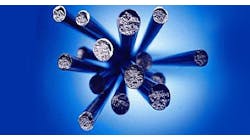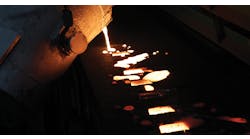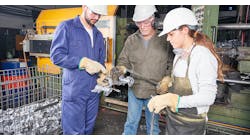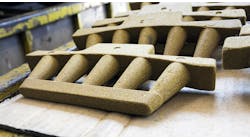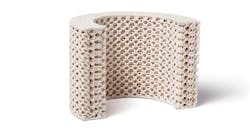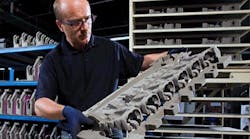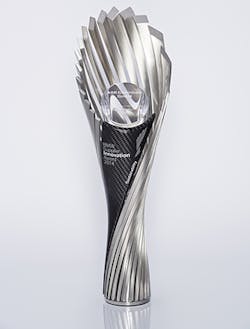Latest from Ask the Expert
Looking Beyond the Environmental Benefits of Inorganic Binders
Certainly, the first thing that comes into everybody’s mind is the environmental benefit. INOTEC™ indeed leads to an odorless core production and results in no harmful emissions and no smoke during the casting process. This is simply due to the fact that the chemical basis is inorganic, which means that it does not decompose during exposure to heat and thus, does not produce any smoke which is in great contrast to organic binders. Recently, TÜV Rheinland confirmed that INOTEC™ is more environmentally friendly than the traditional ColdBox process: this quality-certification agency made a comparative environmental lifecycle assessment of these binders systems over the entire process.[3]
It is certainly true that experienced foundry operators are quite familiar with the specific smell of burned organic binders, but most likely they will be surprised to see a complete foundry running inorganic binders where such a characteristic smell is completely missing.
INOTEC™ also promotes economic benefits, especially in volume production. This technology offers process-related advantages over conventional processes (e.g. cold box). Particularly notable among these are the significant increases to productivity in the casting process, as well as a significant reduction in maintenance requirements. Due to the absence of organic components, using the INOTEC™ system will not result in condensate buildup, which in turn reduces cleaning efforts and additionally offers the chance to reduce the permanent mold temperatures, leading to a faster solidification of the casting.
Economic benefits at a glance:
• Shorter solidification times owing to lower permanent mold temperatures and thus shorter cycle times;
• No buildup of condensation and therefore increased availability of permanent molds;
• Much less cleaning required;
• No need for air treatment.
In a case study of a cylinder head production (gravity diecasting for 6-cylinder diesel engines) the casting output per hour could be increased by about 39% using the INOTEC™ formulation. So there is reason to say that this inorganic binder leads to economic benefits.[4]
Also, INOTEC™ offers technological benefits. For example, it has been shown that – as a result of faster solidification – secondary dentrite arm spacing (SDAS) is reduced, which leads to better strength properties of the castings. Thus, in contrast to organic binder systems, inorganic binder systems offer opportunities for future developments like higher performance of engines at same wall thicknesses or the potential of downsizing the engine while keeping performance.
Just recently, BMW light metal foundry in Landshut revealed a new central feeding concept which is only possible when using inorganic binder technology because of the missing smoke and condensate formation.[2] Thus, such a concept would not be possible with any organic binder technology.
To answer the initial question in one sentence: No, there are not just environmental benefits associated with the INOTECTM technology, but also economic and technological benefits thereby making this technology so attractive.
In 2014, ASK Chemicals was awarded with the BMW Supplier Innovation Award in the category “sustainability” for having developed the INOTEC™ technology. Sustainability is not just based on environmental aspects, but also on economic, technological and social aspects.
Dr. Heinz Deters, is ASK Chemicals’ Global Business Line Manager Inorganics. Contact him at [email protected]
Join the Conversation. Email Your Questions for ASK Chemicals
Share your insights, opinions, and elaborate on the questions and the experts' answer(s). You must be logged in to the website in order to post your comments.
References
1. "Zylinderkopffertigung der Zukunft – Ökologie, Ökonomie und Werkstoffoptimierung im Einklang" (Tomorrow's Cylinder Head Production - Ecology, Economy and Material Enhancement Brought in Line), Emmerich Weissenbek, Thomas Kautz, Jörg Brotzki, Jens Müller, MTZ06/2011, Volume 72, 484–489
2. "Anorganische Innovation für die neuen Diesel-Spitzenmotorisierungen im BMW M 550xd: Konstruktion und Gießtechnik des Alu-Kurbelgehäuses" (Inorganic Innovation for the New Top-of-the-Range Diesel Engines in the BMW M550xd: Design and Casting technology of the Aluminum Crankcase), Emmerich Weissenbek, Bernhard Zabern, Andreas Fent, Johann Stastny, Christian Högl, Giesserei-Praxis 5/2013, 175–181
3. “Ökobilanz-Vergleich von INOTECTM, dem anorganischen Bindersystem, mit einem klassischen Cold-Box Bindersystem (A comparative Environmental Life Cycle Assessment of INOTECTM, the Inorganic Binder System, and a conventional Cold-Box System“, Heinz Deters, Jens Müller, Giesserei Rundschau 61/2014, 74-76
4. “Inorganic Binder System sandwiched between “Technology Push“ and ‘Market Pull’,” Jens Müller, Translation from GIESSEREI 02/2012, 52 – 58
